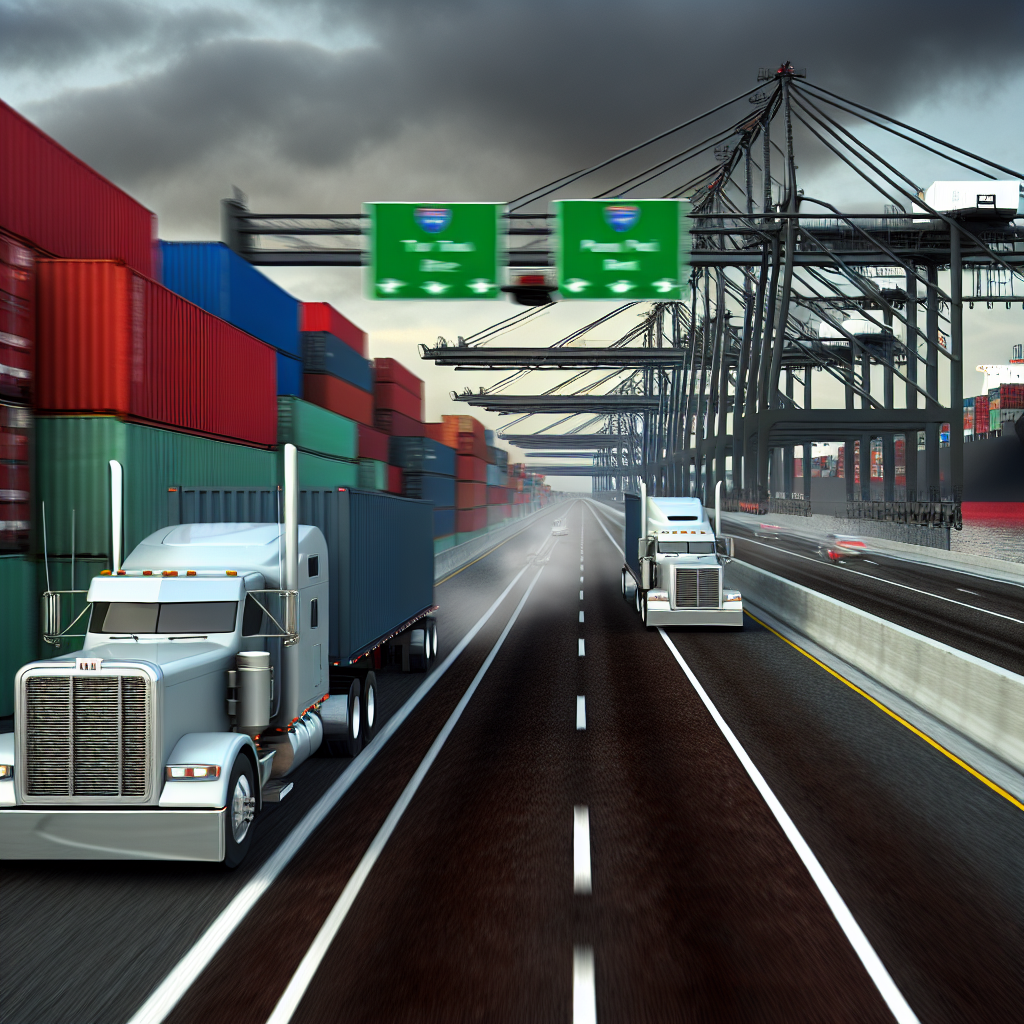China is weighing a new countermeasure in the escalating maritime spat with Washington: restricting port access for vessels that “serve” the U.S. market, according to a report first flagged by FreightWaves. The move would be a direct response to U.S. port fees on China-linked vessels set to kick in on October 14 and could add a fresh layer of uncertainty to ocean networks already redrawing their maps ahead of peak retail season.
Why it matters for trucking: if Beijing follows through, carriers are likely to pull or reshuffle rotations touching Chinese ports, pushing more U.S.-bound cargo toward transshipment hubs or alternative load ports. That kind of last‑minute rewire tends to show up on American roads in three ways: more volatility in weekly container arrivals, heavier reliance on transloading at West Coast gateways, and uneven chassis and driver demand as freight bunches into fewer big-ship calls instead of steady weekly strings.
Near term, the calendar amplifies the risk. With U.S. fees arriving on October 14 and importers already compressing holiday pulls, any carrier capacity pivot away from China-mainland calls could redirect boxes toward Hong Kong, Vietnam or Korea before crossing the Pacific. On the U.S. side, that often concentrates volumes in Los Angeles/Long Beach and Seattle/Tacoma for faster rail and truck deconsolidation. Expect whiplash for drayage dispatchers and transload operators: three to five “mega” vessel days can blow past yard and labor plans that were built for smoother weekly landings.
Cross-border shifts are also in play. If some carriers shave direct U.S. calls to limit fee exposure and China risk, more freight could ride into Prince Rupert/Vancouver or Mexican Pacific ports before hopping the border by train and truck. That pattern typically tightens intermodal capacity first, then bleeds into long‑haul truckload as importers chase speed to DCs. Brokers should watch for short-notice tenders on Southern California–to–Inland Empire shuttles, LA basin to Phoenix/Las Vegas replenishment, and I‑5 and I‑10 lanes as retailers rush cartons into regional networks.
For exporters, headhaul politics turns into backhaul pain. If carriers prune rotations or swap in non‑China‑built tonnage for U.S. strings, the repositioning of empties can lag. That elevates the risk of box shortages in the Midwest and Plains and can force higher dray miles to find equipment. Agricultural shippers in particular should build extra lead time for bookings and consider flexible ramp choices (e.g., Omaha vs. Kansas City, or Salt Lake City vs. Denver) to keep loads moving.
What to watch next:
– Carrier advisories: Look for late-September/early-October network notices about swapping ship assignments (to avoid fee exposure) and blanked sailings around Golden Week spillover. Those advisories will telegraph which U.S. ports see surges.
– Fee mechanics: The U.S. fee regime is assessed per voyage and capped annually, which encourages carriers to bunch U.S. calls. If China’s countermeasure targets “U.S.-service” vessels broadly, it could push the opposite—more triangulation and transshipment—complicating U.S. arrival forecasts.
– Drayage and chassis turns: Spiky call sizes strain street turns and yard dwell. Import-heavy DCs should pre‑book extra flex capacity and stage trailers near transload sites to smooth the surge effect.
Bottom line: Even a limited Chinese restriction would add friction where supply chains are most timing‑sensitive. For trucking, that means lumpier port weeks, tighter near‑port capacity, and more unpredictable inland flows. Shippers should lock in dray and transload contingencies now, pre‑clear alternate ramps, and keep a close eye on carrier bulletins in the days leading to October 14.
Sources: FreightWaves, FreightWaves Forum
This article was prepared exclusively for TruckStopInsider.com. Republishing is permitted only with proper credit and a link back to the original source.




